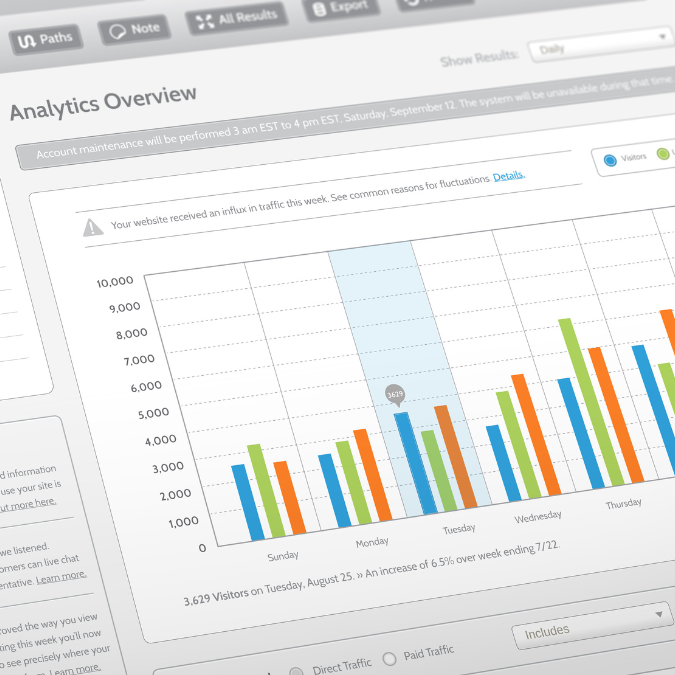The safety of a website is now a key concern in the current digital world where most businesses are highly reliant on their online presence.
This implies that web owners have to know different ways through which their pages may be hacked and how best they can mitigate the risks involved.
This article will explain the common techniques used by hackers when hacking websites; we will equally give steps to take in order to secure your website and maintain its image.
Common Website Hacking Techniques: Understanding the Risks

Before we discuss the remedies, it is important to note that there are various means by which cyber criminals gain unlawful access to websites. By understanding these tricks, one can easily put in place the required preventive measures.
Brute-Force Attacks
One of the most popular ways that websites are hacked is using brute-force attacks. In this case, hackers employ automated tools to try several login combinations like username and password hoping for successful entry into your web admin or other confidential zones.
They may seem long-term but quite effective especially if you have weak or easy-to-guess passwords.
Brute force attacks are based on trying out combinations until the correct one is found, often starting from familiar words, phrases, and easy-to-guess information like birthdays or pet names.
This kind of attack can employ software that can test thousands or even millions of password combinations per second making it increasingly difficult to protect against them.
Protecting your business from brute force attacks requires establishing strong password policies that require users to create complex, unique passwords including a combination of uppercase and lowercase letters, numbers, and special characters.
It’s also possible to set up account lockout policies that temporarily disable accounts after a certain number of failed login attempts consequently making guessing the right credentials harder for hackers.
SQL Injection

This technique exploits weaknesses in how your website’s database is accessed as well as queried. Hackers may insert malicious SQL code into input fields on your site’s web pages allowing them to retrieve sensitive data or even gain administrative control over your website itself.
The SQL queries used by your website to interact with the database are manipulated in SQL injection attacks. For instance, where a website has a login form that uses an SQL query to check the username together with the password; a hacker could inject malicious code into the username or password field, causing the query to return additional or unauthorized data.
The website code should have proper input sanitization and use parameterized queries to prevent SQL injection attacks. This implies that any user inputs must be validated and escaped meticulously before being incorporated into SQL queries, while queries should be based on parameters instead of the direct concatenation of user inputs into the query string.
XSS (Cross-Site Scripting)

Cross-site scripting refers to a kind of vulnerability in which malicious scripts can be injected into your website’s pages by hackers. These scripts can be used to steal user data, hijack user sessions or redirect users to malicious websites.
Weaknesses exploited by XSS attacks emanate from how websites handle and display information provided by their users. For instance, your site will execute malicious JavaScript code if it displays comments made by its users without properly cleaning the data input.
Preventative measures like input sanitization and output encoding should be implemented in the web code. Therefore, all user inputs must undergo thorough validation and should be correctly encoded before displaying them on the webpage, which includes ensuring that dynamic content derived from these inputs is well sanitized too.
Malware Injection

A hacker could also attempt to inject malware, such as viruses or spyware, directly into the code or content of your website. This occurs through vulnerabilities in plugins, themes, or whatever CMS you are using.
This type of attack works by finding flaws within the software that powers your website. For instance, if you have installed a vulnerable plugin while using a CMS like WordPress, then that vulnerability can be exploited by a malicious attacker to insert harmful codes into your website’s files and databases.
To defend against malware injection attacks, it is important to keep your CMS, plugins, and themes updated with the latest security patches and updates. You should also consider getting a web application firewall (WAF) which will help you scan for possible threats when monitoring suspicious activities on your website.
Denial-of-Service (DoS) Attacks

Denial-of-service attacks try to flood or overwhelm the server hosting your site with traffic so that it becomes difficult to access by normal users. These attacks may be used to disrupt business operations or divert attention away from hacker’s major exploits.
DoS attacks function by overwhelming your website’s server with a large volume of traffic from various sources to the extent that it fails to respond to legitimate users, making it run slow or even shut down completely.
To guard against DoS attacks, you must ensure that your website’s hosting infrastructure is scalable and capable of handling sudden traffic increases. This might entail using a content delivery network (CDN) to distribute your website across servers or enforcing rate limiting and traffic shaping techniques to prioritize genuine user requisitions.
Effective Strategies: Securing Your Website

Now that you have an idea of what they are, let us highlight some of the measures you can put in place to safeguard your website and protect your online presence.
Implement Robust Password Policies
One of the most effective ways of preventing brute-force attacks is by enforcing strong password policies. Make it necessary for your users to have complicated passwords which should be distinct with a mix of uppercase letters, lowercase letters, numbers, and special characters.
To help develop and save these secure passwords, encourage utilizing password managers.
When setting up robust password policies, the following are among the best practices to consider:
- For minimum password length, set it at twelve characters or more.
- Have one upper case letter, one lower case letter, one digit, and one special character as the least required.
- Avoid common passwords such as a user’s birthday or the name of their pet.
- Set policies on password expiration which require users to change them regularly.
You can significantly reduce the chance of brute force attacks thus making unauthorized access into your website by hackers much harder through implementing these password policies.
Keep Your CMS and Plugins Up-to-Date

To sustain site security, regular updates must be made on your content management system (CMS) plus any associated plugins and themes. Often vendors of CMSs and developers of plugins release updates that address newly discovered vulnerabilities; hence it is important not to fall behind with these patches so that your website will not be taken advantage of.
To make sure your CMS and plugins are always updated:
- If possible, you may want to enable automatic updates for both your CMS and plugins.
- Install all available updates regularly even if they do not automatically apply.
- Keep an eye on security bulletins and advisories from developers of plugins and your CMS vendor to get updated regarding known vulnerabilities.
- Consider using a tool or service that helps you keep versions of your website’s software in check as well as manage its updates.
Implement Web Application Firewalls (WAFs)

Website application firewalls (WAFs) are potent weapons against website hacking. These specialized firewalls inspect incoming traffic and block common web application attacks like SQL injection attempts, cross-site scripting (XSS) attempts, etc.
When implementing a WAF, consider these best practices:
- Use a WAF solution specifically designed for web applications rather than a traditional network firewall
- The WAF must be configured to monitor and protect all points where traffic can enter your website including forms, APIs, user-generated content etc.
- Keep the WAF’s rulesets up-to-date to address the latest known threats and vulnerabilities
- Regularly review and optimize the WAF’s configuration to ensure it is effectively blocking attacks without causing any unintended disruptions to your website’s functionality
By deploying a well-configured WAF, you can significantly improve your website’s security and reduce the risk of successful hacking attempts.
Use secure protocols and HTTPS

Using HTTPS (Hypertext Transfer Protocol Secure) on your website is vital for the security of your visitors’ data as well as to prevent man-in-the-middle attacks. By encrypting the communication between the user’s browser and your site, it becomes very difficult for hackers to intercept sensitive information.
When implementing HTTPS on your website, consider the following best practices:
- Get a trusted CA SSL/TLS certificate
- Configure the webserver to use only HTTPS for all incoming connections and redirect HTTP traffic to HTTPS
- Make sure that all external resources such as images, scripts, and stylesheets are also loaded over HTTPS
- Use the latest versions of SSL/TLS protocols while disabling any outdated or weak ones
- Utilize HSTS (HTTP Strict Transport Security) to enforce usage of HTTPS and avoid potential downgrade attacks.
When you secure your website with HTTPS, you not only protect user data but also create confidence in your online presence.
Regularly Backup Your Website

Regularly backing up both files and the database of your site is indispensable for securing content as well as recovering from successful hacking attempts. A recent backup can be invaluable should a security breach or system failure occur since this allows easy restoration of your website to a known, secure state.
While trying to make a website backup, consider the following:
- Create full backups of your website’s files and database regularly (like daily, weekly, or monthly).
- Keep your backups in a safe place somewhere outside like a cloud storage system or separate physical server.
- Always ensure that your backups are valid and they can be used for restoration by testing your backup recovery process frequently.
- Version control or backup versioning should be implemented to facilitate the restoration of the website to a given point in time when necessary.
- This may include incremental backups, real-time synchronization, and many other features that an ordinary backup does not have. Therefore, use a backup service or tool that can automate the backup process and provide additional features such as incremental backups, real-time synchronization, etc.
By keeping regular and secure copies of your information from the website you diminish the result of an effective hacking attempt and bring back your existence on the internet as quickly as possible.
Monitor Website Activity

To monitor any suspicious activities on your site it is essential to watch the user’s behaviour. Deploy tools for web analytics’ so that you can track user activity, traffic patterns unusual spikes in traffic that could mean a potential attack.
The following are some of the best practices to be taken into account when you monitor and analyze your website activity.
- Track user behavior and traffic patterns by installing a web analytics tool such as Google Analytics.
- Set up alerts and notifications that will inform you about any strange activities such as a sudden rise in failed login attempts, or an increase in traffic from specific geographical locations.
- Check access logs of your website regularly to know if there are any suspicious IP addresses, user agents, or abnormal activity patterns
- Integrate the website’s activity data with a security information and event management (SIEM) system or security analytics platform which aids in spotting prospective threats and responding to them adequately.
By keeping an eye on your site’s transactions closely, you can quickly realize the possible security breaches thus curbing their impact on your online existence.
Regularly Test and Audit Your Website’s Security

Through regular security audits as well as penetration testing you will be able to identify vulnerabilities before hackers take advantage. These entail a review of user access privileges for your website’s code, and checking for obsolete software and plugins that may expose you to risks.
Consider the following best practices when implementing a website security testing and auditing program:
- Carry out vulnerability scans on a regular basis either through in-house staff or outsourcing reliable cyber-security experts
- Review your website’s code and configuration for any security weaknesses, such as improper input validation, insecure coding practices, or misconfigured settings
- Assess the security of your website’s third-party components, such as plugins, themes, or libraries, and ensure they are up-to-date and properly configured
- Evaluate the effectiveness of your security controls, such as firewalls, access controls, and logging mechanisms
- Conduct periodic security audits to ensure that your website’s security measures are keeping pace with the evolving threat landscape
By regularly testing and auditing your website’s security, you can identify and address vulnerabilities before they can be exploited, significantly reducing the risk of a successful hacking attempt.



